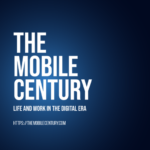Carlotta Barone-MacDonald
Quantum Technologies are projected to disrupt a wide array of industries, creating new opportunities for innovation in areas such as pharmaceuticals, energy, and cybersecurity. According to McKinsey’s Quantum Technology Monitor1, the global market for quantum technologies could exceed $106 billion by 2040, with quantum computing leading the charge, followed by quantum communications and sensing technologies.
However, this momentum brings a critical question: how do we ensure these technologies are developed and applied with humanistic goals at their core? Promoting digital humanism—an approach that emphasizes the interplay between technological advancement and human values—is essential.
This article explores the imperative of involving diverse groups of humans in quantum technology development. By engaging youth, training non- technical professionals, fostering inclusion, and expanding the scope of applications, we can build quantum technologies that truly serve humanity.
A (qu)bit of background on quantum technologies
Quantum mechanics governs the behavior of particles at microscopic scales, exhibiting phenomena such as superposition and entanglement—defying classical intuition. Quantum technologies as a whole aim to harness these principles to develop applications in computing, sensing, secure communication, and materials.
1. Quantum Computing (QC): This area of quantum technologies, that has recently attracted the most attention (and funding), is founded on the principle of using quantum bits (qubits) that can exist in a superposition of states rather that the two accessible states of classical bits to perform complex computations orders of magnitude faster than classical computers. Quantum computers would allow researchers to exploit precise molecular simulations, accurately and efficiently, modeling molecular structures and interactions at subatomic levels – a task classical computers are unable to achieve. This could lead to accelerated drug discovery, as well as applications in synthetic biology, quantum chemistry and materials science.
2. Quantum Communication/ Cryptography2 (QCr): Although this could be considered a subset of quantum computing technology, quantum cryptography has become a field of its own because of its broad scope. Quantum crypto also uses principles of quantum superposition and entanglement to generate and distribute encryption keys (e.g. through Quantum Key Distribution or QKD for short) that are theoretically immune to eavesdropping. Furthermore, some foundational quantum algorithms (Shor’s algorithm and Grover’s algorithm) pose a significant threat to current encryption systems as they could break currently widely used RSA and AES encryption systems. Some speculate that QC could break widely used encryption methods (like RSA and ECC) within the next 10 to 20 years.3
3. Quantum Sensing (QS): is the application of quantum mechanics to measure physical quantities with high precision and sensitivity. Currently, QS methods include interferometry, metrology, optical sensors, etc. QS could impact industries like healthcare and defense through ultra-precise measurements, enabling improvements in medical imaging, geological surveying, and even navigation systems.
By humans – on building a diverse quantum workforce
What does a quantum physicist look like?
Perhaps you, like many others, imagine someone in a white lab coat, scribbling incomprehensible equations on a chalkboard, or a lone genius conducting experiments in a darkened lab. This image contributes to the misconception that quantum technologies are exclusively the domain of highly specialized PhD researchers. The truth is that the development of quantum technology requires contributions from a vast spectrum of professionals—from engineers who design and maintain quantum hardware, to technicians ensuring system reliability, marketers communicating its potential, and policymakers shaping its responsible deployment.
Engaging youth
To prepare a robust workforce, the demystification of quantum technologies must start early. By introducing youth to the wide range of careers and applications possible in the quantum field, we can build a more inclusive and accessible quantum ecosystem.
Education initiatives such as MIT’s “Qubit by Qubit”,4 or partnerships with STEM-focused organizations, can expose students to quantum principles through hands-on experiments, games, and accessible coding platforms such as Qiskit. Hackathons may serve as another powerful tool. Events like iQuHack,5 held annually at MIT, provide students and early- career professionals a space to collaborate on quantum projects, regardless of their previous educational background. These hackathons foster creativity, lower barriers to entry, and encourage interdisciplinary collaboration. This kind of event could involve high school students teaming up with undergraduates to design a quantum algorithm for optimizing renewable energy grids. Such experiences spark curiosity and may lay the foundation for lifelong engagement.
Training professionals across domains
Quantum technologies will impact industries far beyond physics and computer science, requiring a quantum-aware workforce across disciplines. Training programs for technicians, lab assistants, and non-technical professionals are essential to support and scale quantum innovation. Certifications and apprenticeships can create accessible pathways for those without advanced degrees, ensuring equitable workforce development. Diversity in training also includes educating professionals in fields such as law, ethics, and policymaking. For instance, lawyers must understand quantum’s implications to craft regulations, while ethicists can address societal risks. Encouraging such interdisciplinary collaboration strengthens the quantum ecosystem and ensures it serves broader societal needs.
Promoting diversity
The rapid rise of AI has revealed the consequences of overlooking diversity, including algorithmic biases and inequitable outcomes. Quantum technologies must learn from these lessons. Initiatives like WOMANIUM6 and targeted scholarships can expand representation in STEM, fostering innovative solutions that address a wide array of challenges. By prioritizing inclusion, quantum teams can avoid perpetuating the inequalities seen in other technological domains.
For humans – on promoting positive applications
Risk Assessment and Mitigation Strategies
Like any transformative technology, QTs may pose risks. Although these are impossible to predict, one could speculate that they could range from job displacement due to automation to geopolitical tensions over quantum supremacy in cryptography. For instance, competition among major global powers like the United States, China, and the European Union has already sparked significant investment and strategic initiatives, such as the U.S. National Quantum Initiative Act7 and China’s ambitious quantum research programs,8 raising concerns about a potential quantum “arms race.” Implementing robust risk assessment frameworks early is essential. Policymakers, ethicists, and industry leaders must collaborate to address these challenges, ensuring equitable and responsible development. For example, incorporating human- centered policies can mitigate the economic and societal disruptions associated with quantum automation. Engaging policy actors early may provide a foundation for long-term strategic planning that aligns with global priorities.
Humanistic Goals
The ultimate aim of integrating digital humanism into quantum technology development is to create systems that enhance human well-being. This involves prioritizing projects that address global challenges, such as climate change, healthcare disparities, and food security. Quantum technologies may offer unparalleled opportunities to address pressing global challenges. Institutions like the Open Quantum Institute9 exemplify how quantum technologies can be aligned with ethical and humanistic goals. By fostering collaboration between academia, industry, and civil society, such initiatives ensure quantum development benefits humanity as a whole. Community engagement efforts, such as public forums and interactive exhibits, further demystify quantum technologies and build public trust.
Conclusion: quantum by humans for humans
Overall, quantum technologies hold immense promise, but their development must be guided by humanistic values to ensure they serve society equitably and ethically. By fostering a diverse workforce, expanding education and training beyond traditional disciplines, and proactively addressing risks, we can shape a quantum future that prioritizes inclusion, security, and global well- being. The lessons of past technological revolutions remind us that progress should not come at the cost of equity. Instead, a digital humanism approach encourages us to integrate quantum advancements with broader societal needs, ensuring these powerful technologies remain—at their core—by humans and for humans.
- https://www.mckinsey.com/~/media/mckinsey/business%20 functions/mckinsey%20digital/our%20insights/quantum%20 technology%20sees%20record%20investments%20progress%20on%20 talent%20gap/quantum-technology-monitor-april-2023.pdf ↩︎
- https://www.ibm.com/topics/quantum-cryptography ↩︎
- “2021 Quantum Threat Timeline Report”, written by Mosca (Co-Founder & CEO, evolutionQ Inc.) and Marco Piani, (Senior Research Analyst, evolutionQ Inc.) and published by the Global Risk Institute ↩︎
- https://news.mit.edu/2020/mit-researchers-lead- high-school-quantum-computing-educational-initiative-0810 ↩︎
- https://www.iquise.mit.edu/iQuHACK/2025-01-31 ↩︎
- https://womanium.org/Quantum/AI ↩︎
- https://www.quantum.gov/ ↩︎
- https://itif.org/publications/2024/09/09/how-innovative-is-china-in-quantum/ ↩︎
- https://open-quantum-institute.cern/ ↩︎
Carlotta Barone-MacDonald is a master’s student in Technology and Policy at the Massachusetts Institute of Technology (MIT) and an alumna in Mathematics and Physics from École Polytechnique, Paris. She has been one of Candace Johnson’s mentees since 2021.
Carlotta has previously worked on quantum computing problems at Imperial College London and MIT. She is passionate about finding innovative ways to apply quantum mechanics to real-world challenges, particularly in energy technologies and information science. Her undergraduate thesis at MIT focused on exploring the parallels between quantum mechanical processes in photosynthesis and quantum annealing. Currently, as part of her TPP studies, Carlotta is furthering her research in quantum technologies while examining the broader intersections of science, policy, and technology development.





